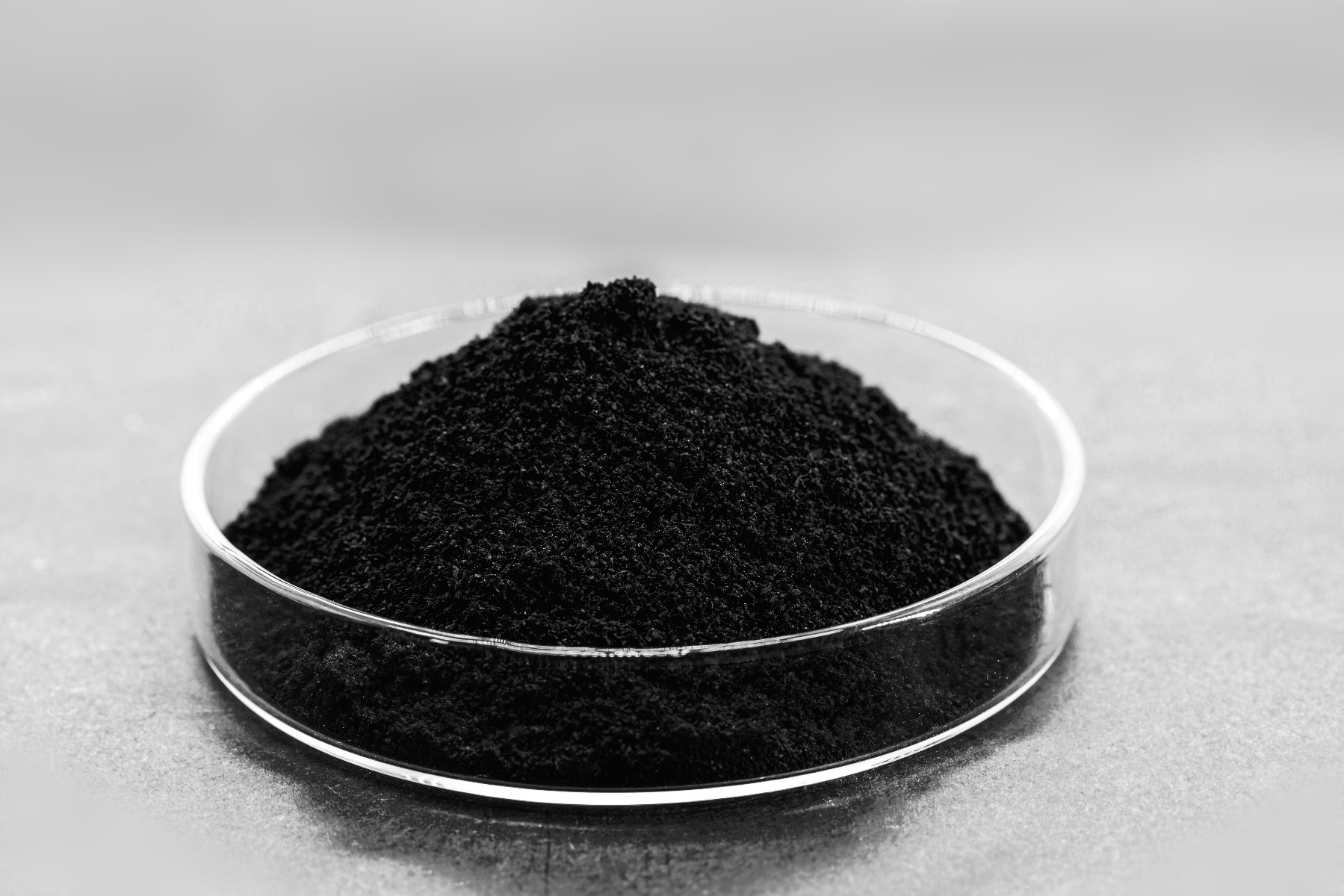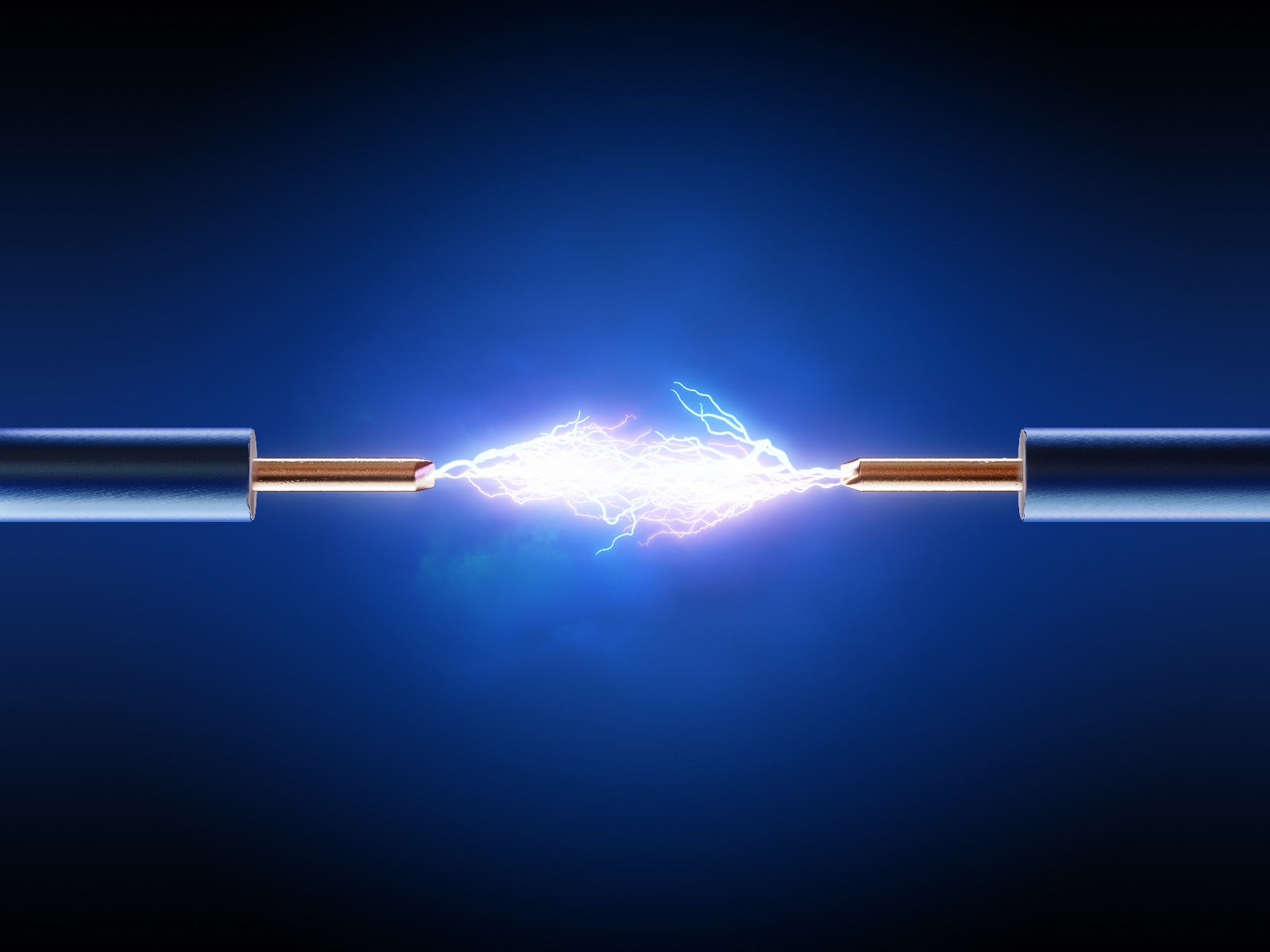-
Ultrafast Joule Heating Technology and 2D Materials
Feb 24, 2023 | ACS MATERIAL LLCWhat is Ultrafast Joule Heating?
Ultrafast joule heating (UJH), sometimes known as flash joule heating or shockwave heating, is a relatively new way to heat materials to extremely high temperatures in milliseconds. It works by passing a current through a resistive material, which rapidly converts the electricity to heat—thousands of Kelvins in less than a second1. This opens many exciting possibilities, because it allows materials to be heated much faster and to higher temperatures than traditional methods.
UJH has been used for many specialized applications, such as sintering ceramics, synthesizing metallic glasses, and welding carbon nanofibers. It as also used to synthesize large-scale 2D materials, such as transition metal dichalcogenides, an emerging class of materials for use in transistors, solar cells, and catalyst applications. In the last few years, the UJH technique has also shown promise in the manufacture of graphene1.

Graphene: The Wonder Material
Graphene is a single layer of carbon atoms, each bonded to three of its neighbors in a hexagonal pattern. Although it is one of the thinnest, lightest compounds known to science, it is also stronger than steel, harder than diamond, and an excellent conductor of heat and electricity.
These miraculous properties make graphene promising for many valuable applications. However, graphene’s development in the 20 or so years since its discovery has been limited due to difficulties with large-scale production of graphene. Graphite, a cousin of graphene found in pencil lead, is relatively cheap ($1000-$3000 per ton), but graphene powders can cost over $50,000 per ton. Besides being costly, existing methods for producing graphene are very difficult and typically on the scale of milligrams at most—not enough to harness graphene in many cutting-edge applications1.
Graphene Synthesis by Chemical Vapor Deposition
One of the primary methods currently used to synthesize graphene is chemical vapor deposition (CVD). This is often called a “bottom-up” approach because the graphene is added layer by layer. CVD starts with simple hydrocarbons such as methane or ethylene, catalytically decomposes them, and deposits their carbon atoms into a graphene film on a metal substrate. CVD is typically used for applications where a large, continuous graphene film is needed, such as sensors and solar cells1.CVD is capable of synthesizing the high-quality, high-purity graphene needed for many applications. However, this graphene is usually limited to extremely small amounts. Larger quantities result in many defects throughout the graphene structure, which reduce the graphene’s strength and conductivity, making it unsuitable for many applications2.
Graphene Synthesis by Epitaxial Growth
Another “bottom-up” method, epitaxial growth uses a furnace to grow graphene on a single-crystal substrate such as silicon carbide. The substrate is subjected to high temperature and ultrahigh vacuum, which causes the top layers of silicon carbide to break down into their constituent atoms. An annealing step deposits the vapor-phase carbon atoms onto the substrate in the form of graphene7.Epitaxial growth produces high-quality graphene that is highly compatible with electronics. But, like CVD, yield size is limited, and the high cost of silicon carbide wafers makes this a relatively expensive technique7.
Graphene Synthesis by Mechanical Exfoliation
Mechanical exfoliation is a “top-down” approach to synthesizing graphene: It starts with graphite and gently peels away one layer after another until only one remains1.Mechanical exfoliation can be used to produce larger quantities of graphene than CVD1. But because mechanical exfoliation requires high-energy mixing, shearing, or sonication, the resulting graphene tends to fracture and form defects, giving it lower strength and conductivity2. Also, graphene produced this way is prone to reaggregating into its original form after it is removed from solution1.
Graphene Synthesis by Electrochemical Exfoliation
Another “top-down” method, electrochemical exfoliation starts with a setup similar to an electrolytic cell, with graphite as one of the electrodes. The voltage applied draws the electrolyte between sheets of carbon atoms in the graphite, which causes oxygen gas to form, breaking the carbon sheet away into a graphene nanoplatelet1. Like mechanical exfoliation, this method is used to produce graphene in bulk, but the graphene is low-quality and has limited applications2.Graphene Synthesis by Ultrafast Joule Heating
In the last few years, scientists have experimented with synthesizing graphene via UJH. In the UJH process, carbon powder is lightly compressed inside a tube between two electrodes. A current is passed through the carbon, raising its temperature to over 3,000 K in less than 100 milliseconds. This extreme heat is enough to break atomic bonds and rearrange carbon atoms, and because it lasts for such a short period, the atoms don’t have time to reorganize into their former graphite structure. Instead, they are instantly converted into “turbostratic” or “flash” graphene1.The UJH technique produces very high-quality graphene, with long-range crystallinity and extremely low defect concentrations—and thus excellent strength and conductivity1. Unlike traditional CVD methods, which operate on the milligram scale, UJH can produce grams of graphene in less than a second2. UJH is also a relatively simple process, requiring no furnace, solvents, reactive gases, or post-processing purification steps2. Another benefit is that it can synthesize graphene from almost any carbon-based material, from coal and petroleum coke to discarded food and mixed plastic waste.
Not only can the UJH method be used to effectively recycle waste into graphene, it also requires relatively little energy (around 7 kJ/gram)2. This could be the breakthrough needed to cost-effectively produce bulk quantities of graphene—and eventually unlock graphene’s potential in many demanding applications.

Other Applications of Ultrafast Joule Heating
High-Entropy-Alloy Nanoparticle Synthesis
High-entropy-alloy nanoparticles (HEA-NPs) are a new class of material, combining up to eight metallic elements into a single nanoparticle. Materials like steel have shown how alloying multiple elements can achieve desired properties, and now this principle is being explored in the nanoparticle realm3.HEA-NPs have great potential in applications like catalysis, energy storage, and bio/plasmonic imaging—but, like graphene, they are currently limited by their manufacturing techniques. Combining elements with vastly different properties is a challenge, especially on the nanoscale. Traditional methods have achieved only a few types of HEA-NPs, made with three to five alloying elements3.
UJH has given rise to a new and promising method for synthesizing HEA-NPs: carbothermal shock synthesis (CTS). CTS uses UFH to rapidly heat and cool metal compounds at a rate of around 105 K per second. Unlike traditional methods, CTS is capable of creating HEA-NPs with up to eight different elements. CTS can also achieve a wide variety of HEA-NPs with different elements, structures, and particle sizes by adjusting the CTS parameters like substrate, heating/cooling rate, and shock time3.
Like many 3D printing methods, vat photopolymerization has low material waste. When the finished part is removed from the vat, the remaining liquid polymer can be used for the next print job. The disadvantage to this method is that it requires photosensitive materials, so it’s limited to certain types of polymers.
Rare Earth Element Recycling
Rare earth elements (REEs) are critical materials in the electronics, clean energy, and automotive industries. Unfortunately, mining them has a high environmental cost, using lots of resources and producing lots of pollution. One sustainable solution is reclaiming REEs from industrial wastes such as coal fly ash, bauxite residue, and discarded consumer electronics4.Traditional methods for recycling REEs are slow, costly, and inefficient. First the waste must be sorted, then pre-treated via shredding, crushing, or grinding, then separated to remove the REEs. The pretreatment process is energy-intensive, and the separation process often results in large amounts of acid waste, reducing the positive environmental impact of recycling4.
UJH offers a potential improvement to this process. UJH has been used to activate electrical wastes, making REEs easier to extract. The extreme temperatures achieved through UJH (over 3,000 K in approximately 1 second) thermally degrade hard-to-dissolve REEs, doubling their recovery yields in the separation step. Between its high efficiency, low energy needs, and ability to yield REEs at two or three times the concentration of naturally mined ores, the UJH method could be a critical step in creating a sustainable REE industry4.
Material Property Improvement
Besides being used to synthesize novel materials and aid in recycling, UJH has been shown to improve the properties of certain materials. For example, graphene oxide nanosheets show better crystallinity, fewer defects, increased power factor, and 300x the conductivity after being heat treated at 3,300 K via UJH. These improved properties allow the graphene oxide nanosheets to efficiently convert thermal radiation into electricity, making them attractive for thermoelectric applications in solar energy and hydrocarbon combustion applications5.Another example is single-atom catalysts, which are of great interest for catalytic performance enhancements for reactions such as oxidation, hydrogenation, and electrocatalysis. So far, these catalysts remain largely untapped because single atoms are so unstable. Atom aggregation is thermodynamically favorable, especially at high temperatures—meaning single atoms naturally want to return to their multi-atom states. However, high-temperature shockwaves, achieved via UJH, have been shown to effectively synthesize and stabilize single atoms even at temperatures as high as 2,000 K6.
Conclusion
Although ultrafast joule heating is a relatively new technique, it has already found many promising applications in a variety of industries, including recycling rare earth elements, improving material properties, and synthesizing novel materials like metallic nanoparticles. Perhaps the most exciting is its potential to produce bulk graphene, a wonder material that many consider the next big step in materials science.
You may also check out our other blogpost here: How Ultrafast Joule Heating is Advancing Science
Citations
- Kevin M. Wyss, Duy Xuan Luong, and James M. Tour. Large-Scale Syntheses of 2D Materials: Flash Joule Heating and Other Methods. Advanced Materials, February 2022.
- Duy X. Luong, Ksenia V. Bets, Wala Ali Algozeeb, Michael G. Stanford, Carter Kittrell, Weiyin Chen, Rodrigo V. Salvatierra, Muqing Ren, Emily A. McHugh, Paul A. Advincula, Zhe Wang, Mahesh Bhatt, Hua Guo, Vladimir Mancevski, Rouzbeh Shahsavari, Boris I. Yakobson & James M. Tour. Gram-scale bottom-up flash graphene synthesis. Nature, January 2020.
- Yonggang Yao, Zhennan Huang, Pengfei Xie, Steven D. Lacey, Rohit Jiji Jacob, Hua Xie, Fengjuan Chen, Anmin Nie, Tiancheng Pu, Miles Rehwoldt, Daiwei Yu, Michael R. Zachariah, Chao Wang, Reza Shahbazian-Yassar, Ju Li, Liangbing Hu. Carbothermal shock synthesis of high-entropy-alloy nanoparticles. Science, March 2018.
- Bing Deng, Xin Wang, Duy Xuan Luong, Robert A. Carter, Zhe Wang, Mason B. Tomson, James M. Tour. Rare earth elements from waste. Science Advances, February 2022.
- Tian Li, Andrea D. Pickel, Yonggang Yao, Yanan Chen, Yuqiang Zeng, Steven D. Lacey, Yiju Li, Yilin Wang, Jiaqi Dai, Yanbin Wang, Bao Yang, Michael S. Fuhrer, Amy Marconnet, Chris Dames, Dennis H. Drew and Liangbing Hu. Thermoelectric properties and performance of flexible reduced graphene oxide films up to 3,000 K. Nature Energy, February 2018.
- Yonggang Yao, Zhennan Huang, Pengfei Xie, Lianping Wu, Lu Ma, Tangyuan Li, Zhenqian Pang, Miaolun Jiao, Zhiqiang Liang, Jinlong Gao, Yang He, Dylan Jacob Kline, Michael R. Zachariah, Chongmin Wang, Jun Lu, Tianpin Wu, Teng Li, Chao Wang, Reza Shahbazian-Yassar and Liangbing Hu. High temperature shockwave stabilized single atoms. Nature Nanotechnology, August 2019.
- Hai Tan, Deguo Wang and Yanbao Guo. Thermal Growth of Graphene: A Review. Coatings, January 2018.